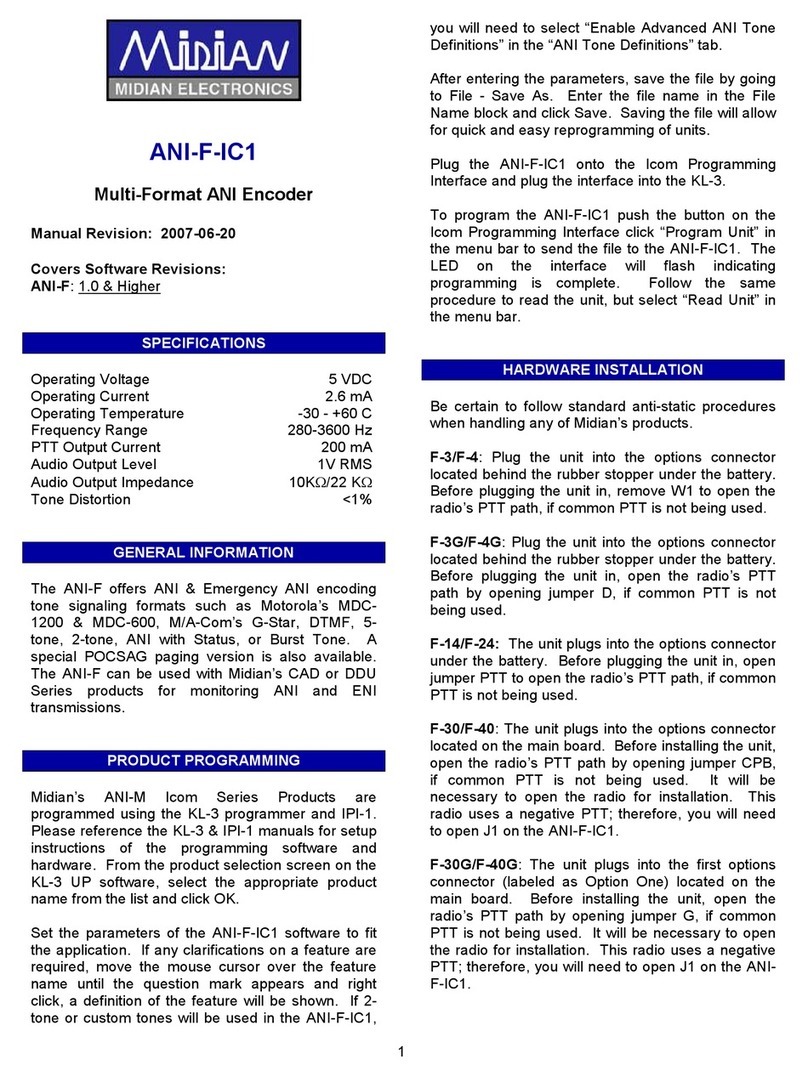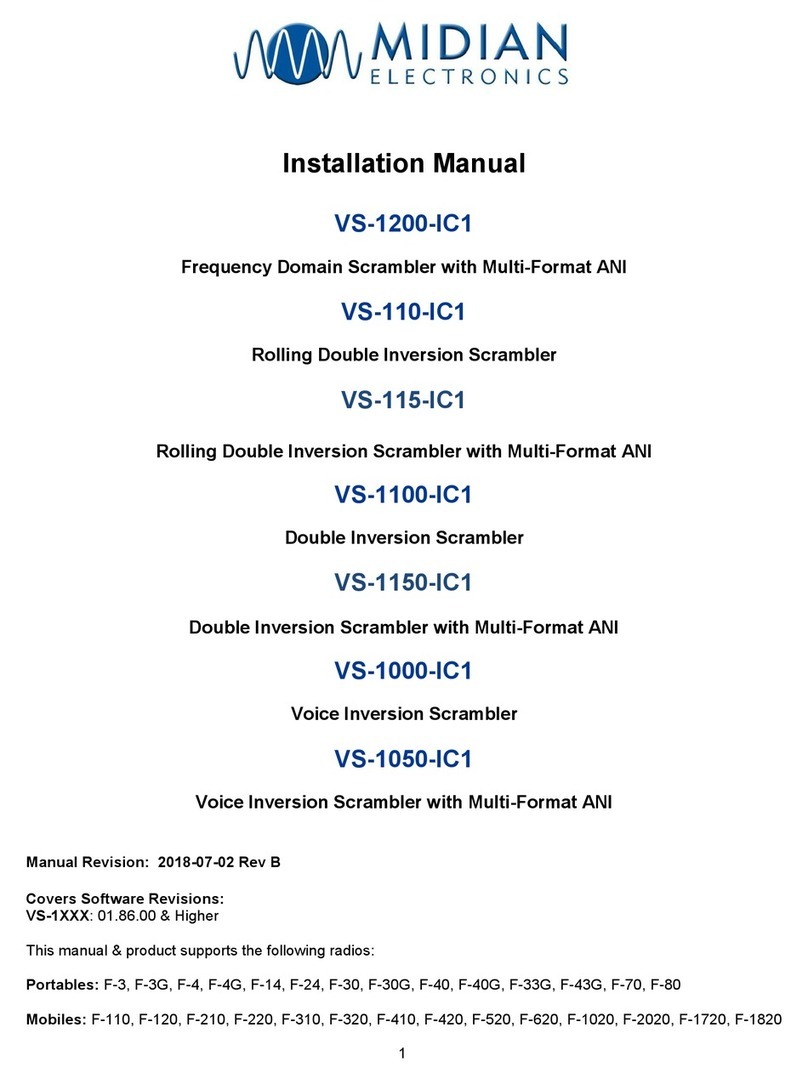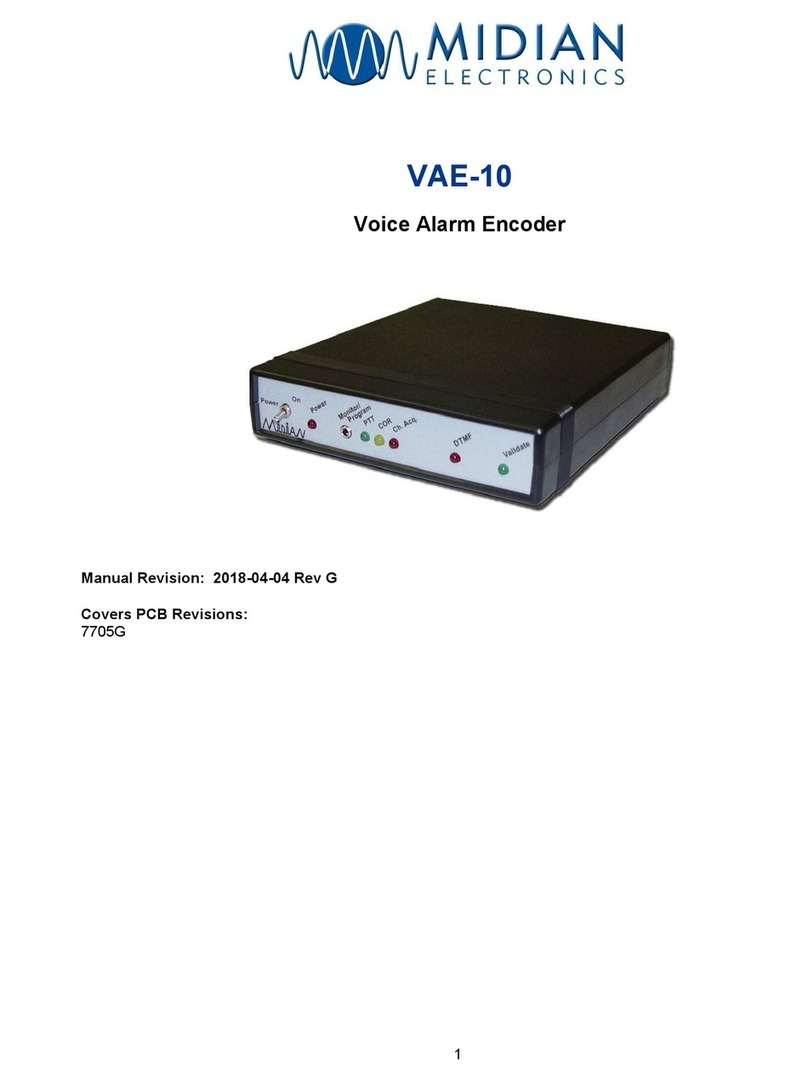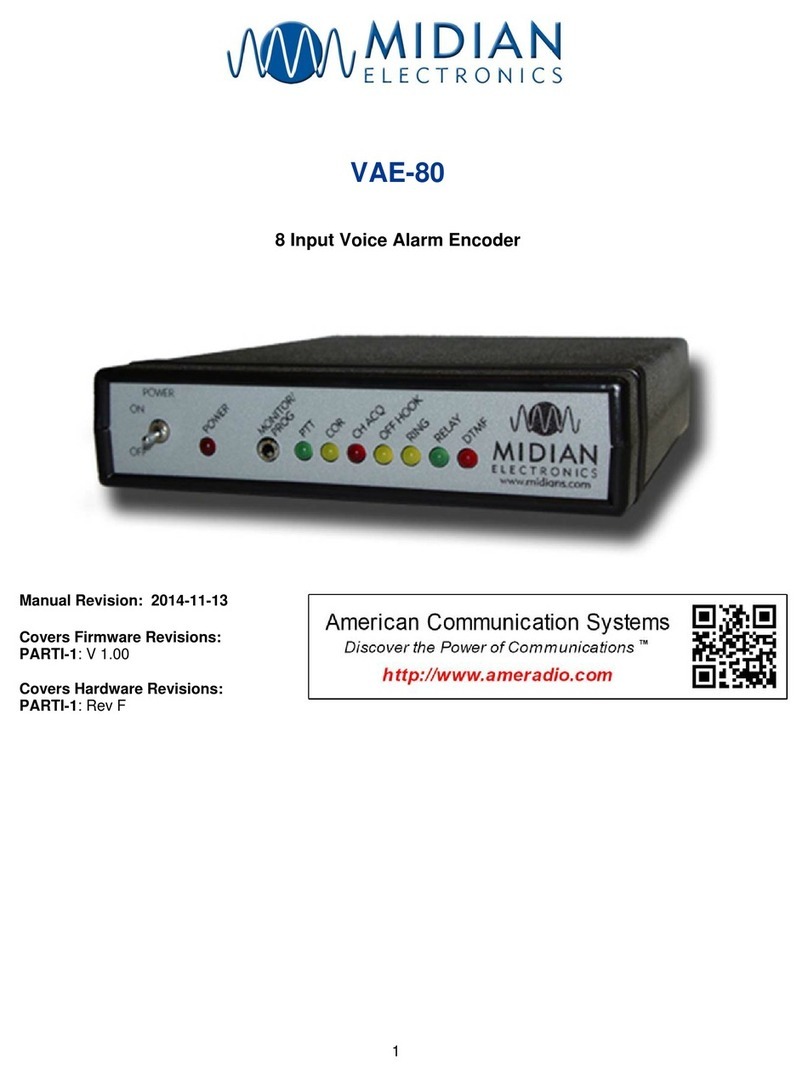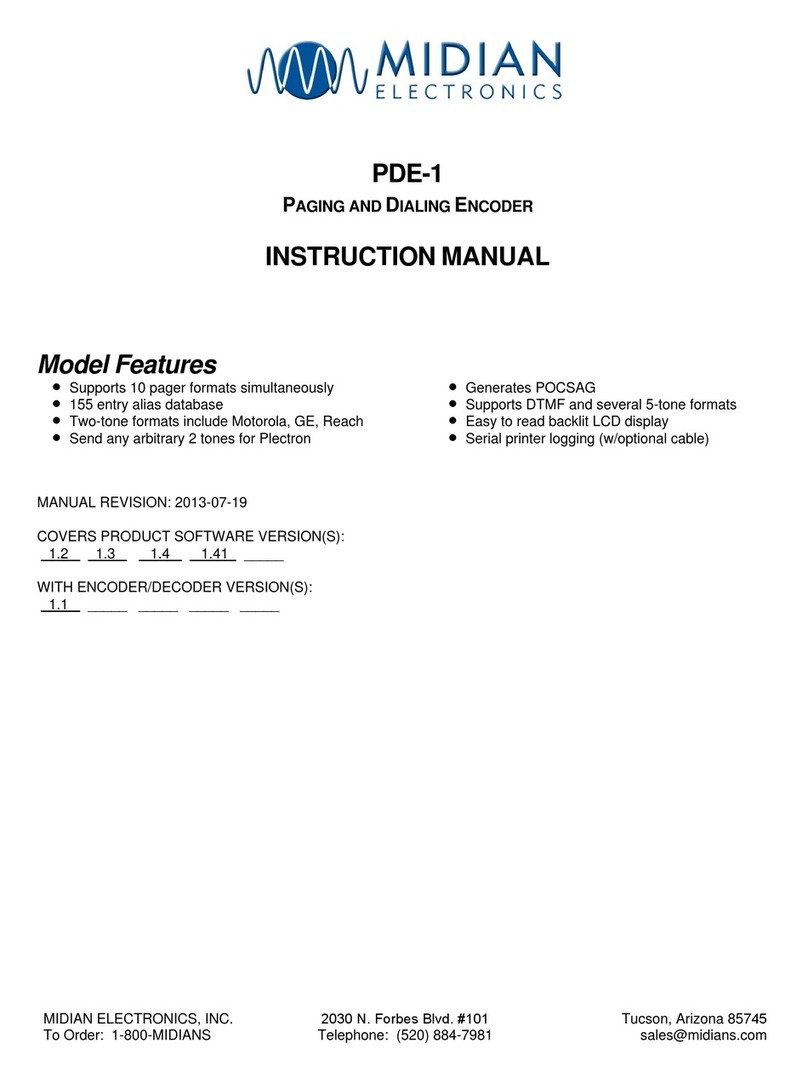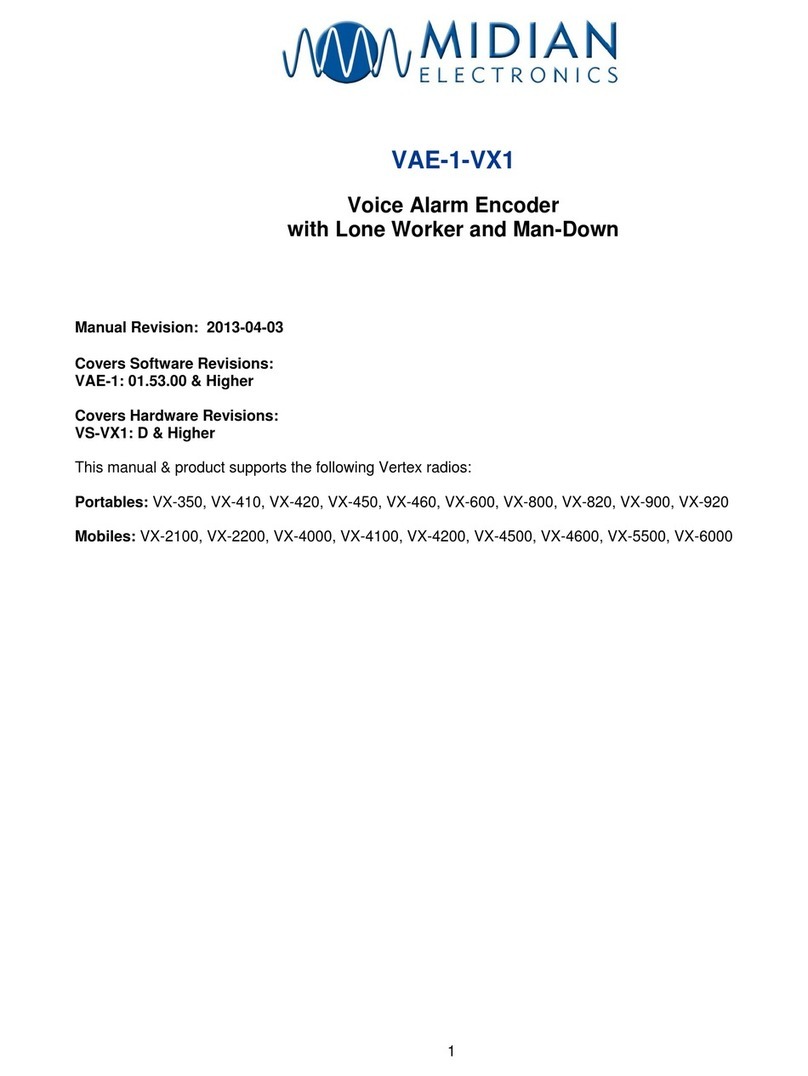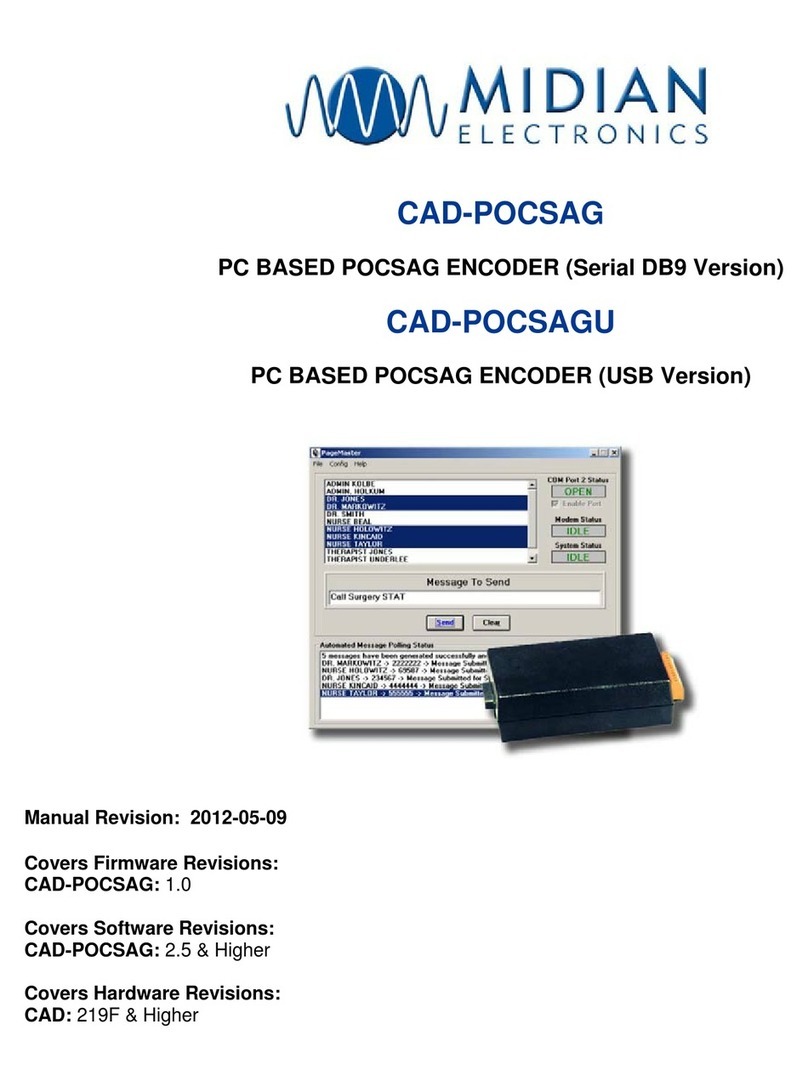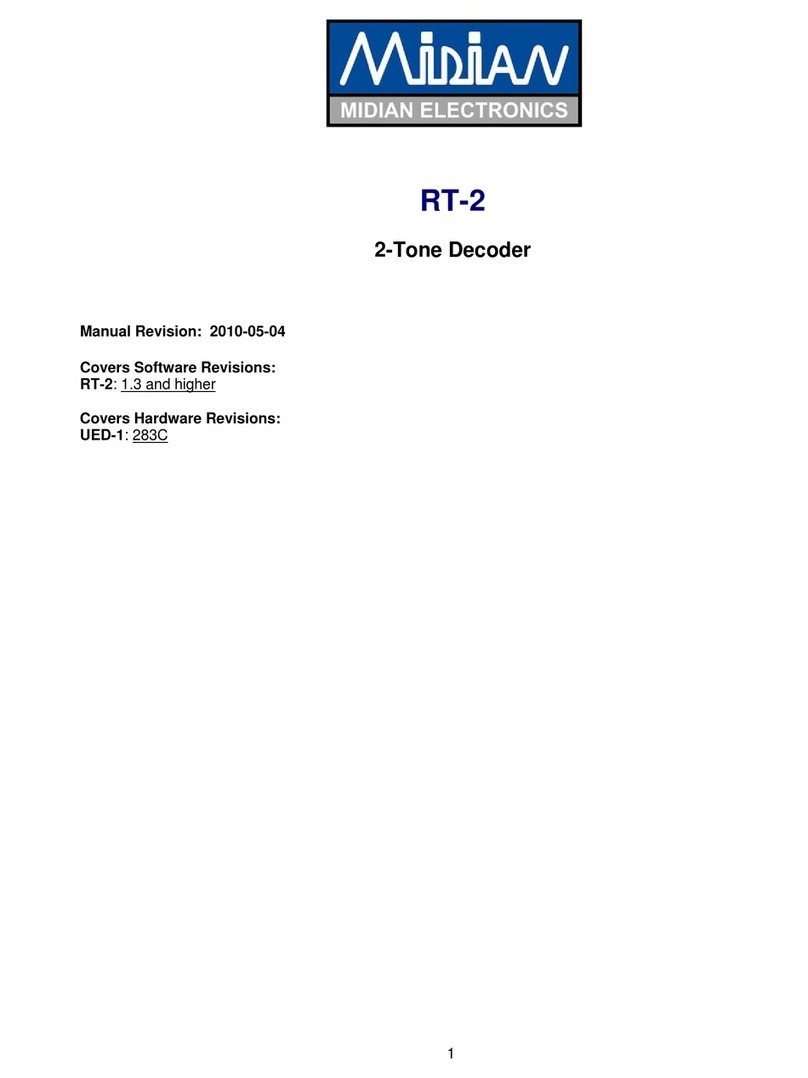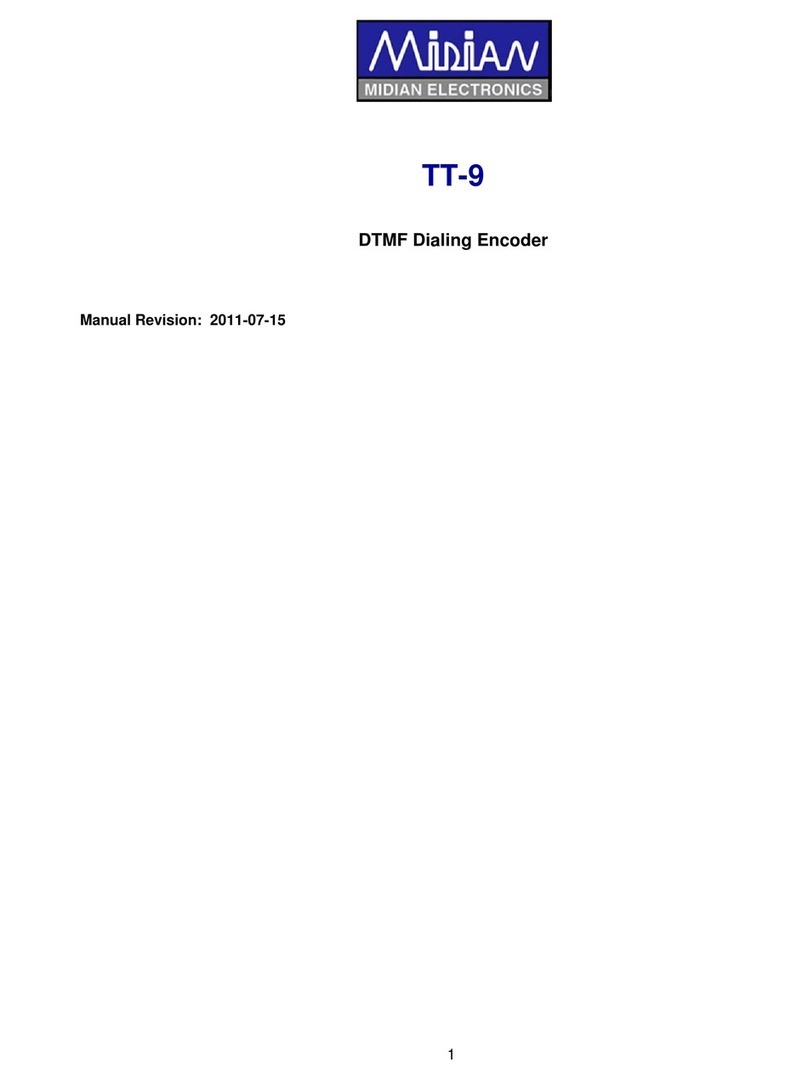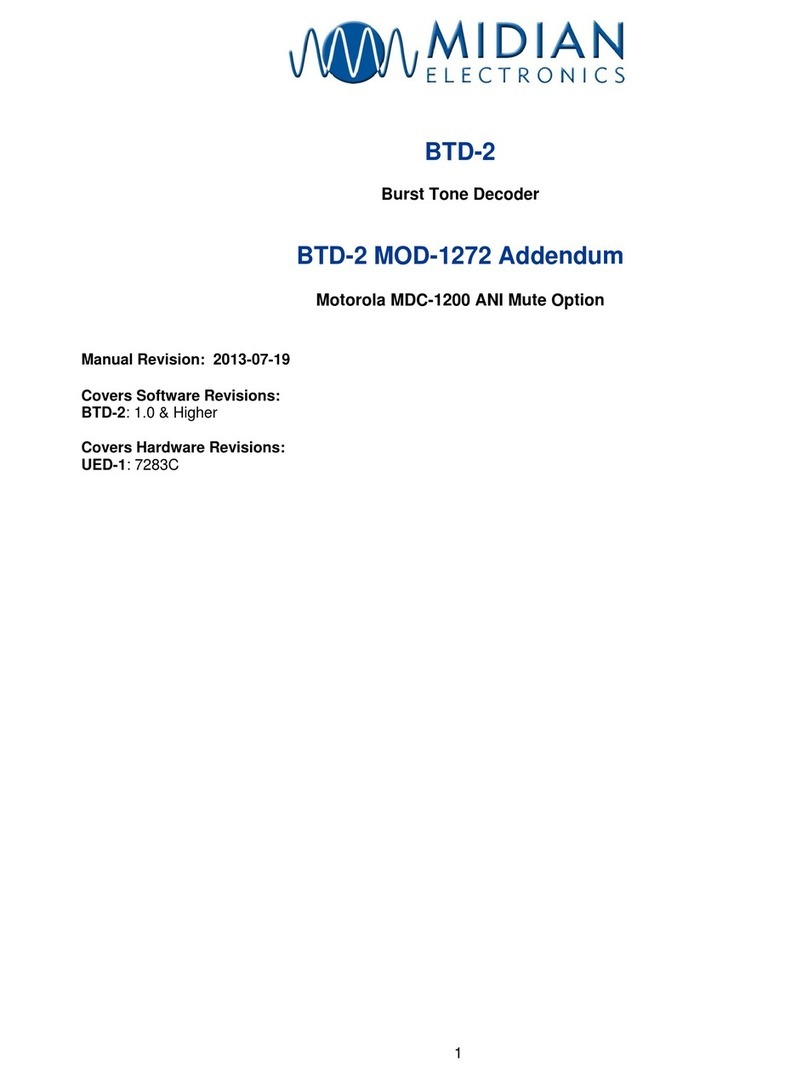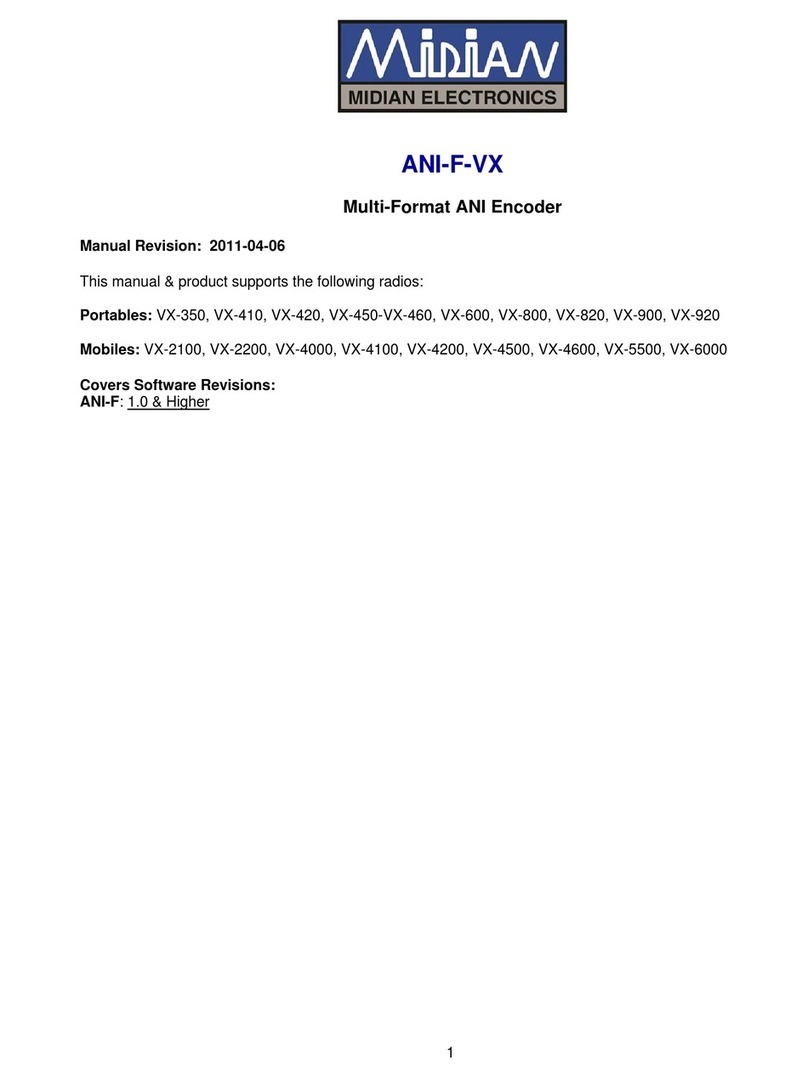
6
OPERATION
ANI Encode: When the PTT Input is grounded, the unit will assert the PTT Output and send the programmed
ANI tones out the TX Tone Output.
ENI Encode: When the Emergency Input is grounded, the unit will assert the PTT Output and send the
programmed Emergency ANI tones out the TX Tone Output.
Keypad Dialing: To send a page or make a selective call via the keypad enter the desired sequence followed by
the * key. The * key acts as the send key. If a mistake is made during entry, press the # key to clear the entry.
When the * key is pressed the unit will assert the PTT Output and send the sequence out the TX Tone Output.
Memory Dialing: The technical notes section explains how to enter the memory dials into memory. To send a
sequence from memory enter the * key followed by a 0-9 that corresponds to the sequence in memory you wish
to send. When the memory dial is entered the unit will assert the PTT Output and send the sequence out the TX
Tone Output.
Decode: Upon decode the unit will ring, via the Alert Tone/Speaker Audio line, according to the ring code
programmed. The unit will also give the following outputs depending on the hardware configuration:
1. Momentary Horn Output: This will give an open collector output to ground for 0-9 seconds depending on the
programmed horn time.
2. Latched Monitor/Squelch Output: This output can either go from low to high or from high to low by changing
the direction of D-5.
3. Latched Mic Mute: This will give an open collector to ground. It will be necessary to install a 10 KOhm
resistor to the open collector. Set the Monitor Polarity to Ground and the Input as “Controls Squelch”. The
Squelch Control should be “Unmute when called” or “Stay muted until called”. The Monitor or Inactivity field
can be programmed to any setting.
4. Latched Disable Output: If used, the Horn Output is not available. It will be necessary to reconfigure the
hardware jumpers from the Horn to the Disable line. To use this output it is necessary to program the ring
code as “Unit deadbeat disable”. Upon receiving the decode sequence the output will latched and stay
latched until it receives the sequence again.
Resetting of Outputs: The momentary output will automatically reset after 0-9 seconds depending on
programming. The Mic Mute and Monitor/Squelch outputs can be reset by recycling power, sending another
sequence with the ring code of “Turn off call lamp/mute”, resetting on a loss of carrier, by grounding the monitor
input, or after 25 seconds of inactivity. These reset options depend upon the programming of the unit.
Transpond: If programmed, upon decode the unit can transpond a tone sequence back to the caller to indicate
the unit decoded. Transpond only occurs on Decode #1.
COR Input: This input controls two functions, busy lockout and reset of a loss of carrier. The COR polarity must
be programmed for the active carrier polarity of the radio.
1. Busy Lockout: If COR is active and the unit tries to encode with busy lockout enabled, the unit will be
prevented from keying up.
2. Reset on Loss of Carrier: The unit can reset the latched outputs after a loss of carrier of 0-9 seconds
depending on programming.
